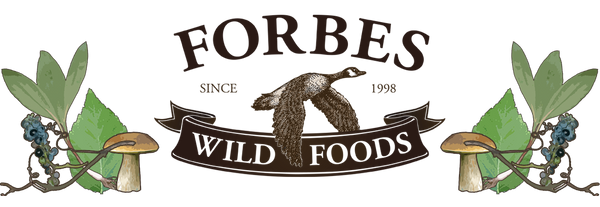봄나무의 먹이를 활용합니다.
•3월 29 2021 에 게시됨


스프링 트리 푸드
우리 숲에는 온 세상이 음식으로 가득합니다. 봄에 나무는 먹을 수 있는 수액, 잎, 새싹, 바늘, 꽃, 견과류, 속껍질, 뿌리를 제공합니다. 북미 원주민 문화는 이런 음식을 활용하는 데 능숙했습니다. 그들은 수백 톤의 메이플 설탕을 생산하고, 맛있는 차를 양조하고, 전통 의학을 만들었습니다. 우리 숲은 다양한 야생 버섯, 열매, 야채를 포함한 다양한 봄 음식의 고향입니다.


이른 봄에 설탕 덤불에서 활동이 시작됩니다. 밤에는 영하의 기온, 낮에는 영하의 기온이 되면 설탕 단풍나무는 우리의 메이플 시럽이 될 달콤한 수액을 펌핑하기 시작합니다. 메이플 시럽은 수천 년 동안 북미 사람들의 주식이었습니다.


다음으로 수액 채취에 적합한 나무는 흰색, 종이, 노란색, 검은색 자작나무입니다. 자작나무 수액은 보통 단풍나무 수액이 끝나면 흐르기 시작합니다. 자작나무 수액은 가볍고 맛이 섬세하며 유럽과 북미의 북부 문화권에서 즐겨 마십니다. 수액을 끓이면 매우 맛있고 독특하고 풍부한 풍미의 시럽이 나옵니다. 단풍나무 시럽보다 약간 덜 달고 시큼하며 짭짤하고 달콤한 요리에 다양하게 활용할 수 있습니다.


또 다른 봄철 간식은 다양한 지역 상록수의 바늘로 만든 차입니다. 이 글을 쓰는 동안 저는 쓰가 카나덴시스 (식물성 독침과 혼동하지 마세요)의 바늘로 만든 신선한 헴록 가문비나무 차 한 잔을 즐기고 있습니다. 다른 인기 있는 차는 백향나무나 발삼 전나무 바늘로 만든 것입니다. 한 줌을 모아 뜨거운 물에 담가두기만 하면 됩니다.

봄철 해빙이 녹으면서 숲의 덤불이 무성해집니다. 야생 부추, 고사리, 야생 마늘, 봄 모렐 버섯이 나타나기 시작합니다. 위쪽에서는 나무가 싹을 틔우기 시작합니다. 밝은 녹색 레몬빛의 타트 가문비나무 끝이 나타납니다. 한편, 꿩버섯이 근처의 썩어가는 느릅나무에서 돋아납니다.

기후 변화의 혼란이 커지는 가운데, 이제 숲을 보호해야 하며 수십억 그루의 나무를 심어야 한다는 사실이 인식되고 있습니다. 그러나 단일 종을 수천 에이커 심는다고 해서 숲이 생기는 것이 아니라 섬유 농장이 생깁니다. 생물다양성은 건강한 숲의 초석입니다.

숲을 지속하고 재생하기 위한 첫 번째 단계는 자연 서식지를 파괴하는 것을 중단하고 기존 산림지를 보호하는 것입니다. 산림 재생은 번성하는 산림 생태계를 구성하는 모든 식물, 동물, 버섯 및 곤충의 필요와 기여를 고려해야 합니다. 우리는 공공 및 사유지 모두에 퍼마컬처와 토종 야생 식물을 통합하는 대체 식량 시스템을 구축하여 이러한 생태계와 지속 가능하게 상호 작용할 수 있습니다.


겨울에 나무를 식별하는 것은 까다로울 수 있지만, 도시 지역에서도 밖으로 나가서 지역 나무에 익숙해지면 극복할 수 있습니다. 또 다른 유용한 단계는 가이드북을 구입하는 것입니다. 시중에 나와 있는 많은 나무 식별 책 중에서 두드러지는 두 권은 Fitzhenry & Whiteside와 Canadian Forest Service에서 출판한 John Laird Farrar의 'Trees in Canada'와 George A. Petrides(Peterson Field Guide 시리즈 중 하나)의 'Eastern Trees'입니다. 두 권 모두 그림이 잘 들어 있습니다. 당사 웹사이트의 리소스 섹션에서 더 많은 가이드를 찾아보세요.




댓글
0 댓글
댓글을 남겨주세요